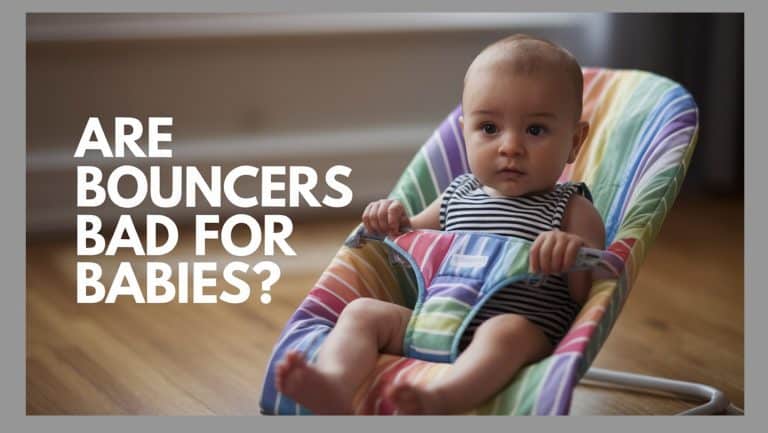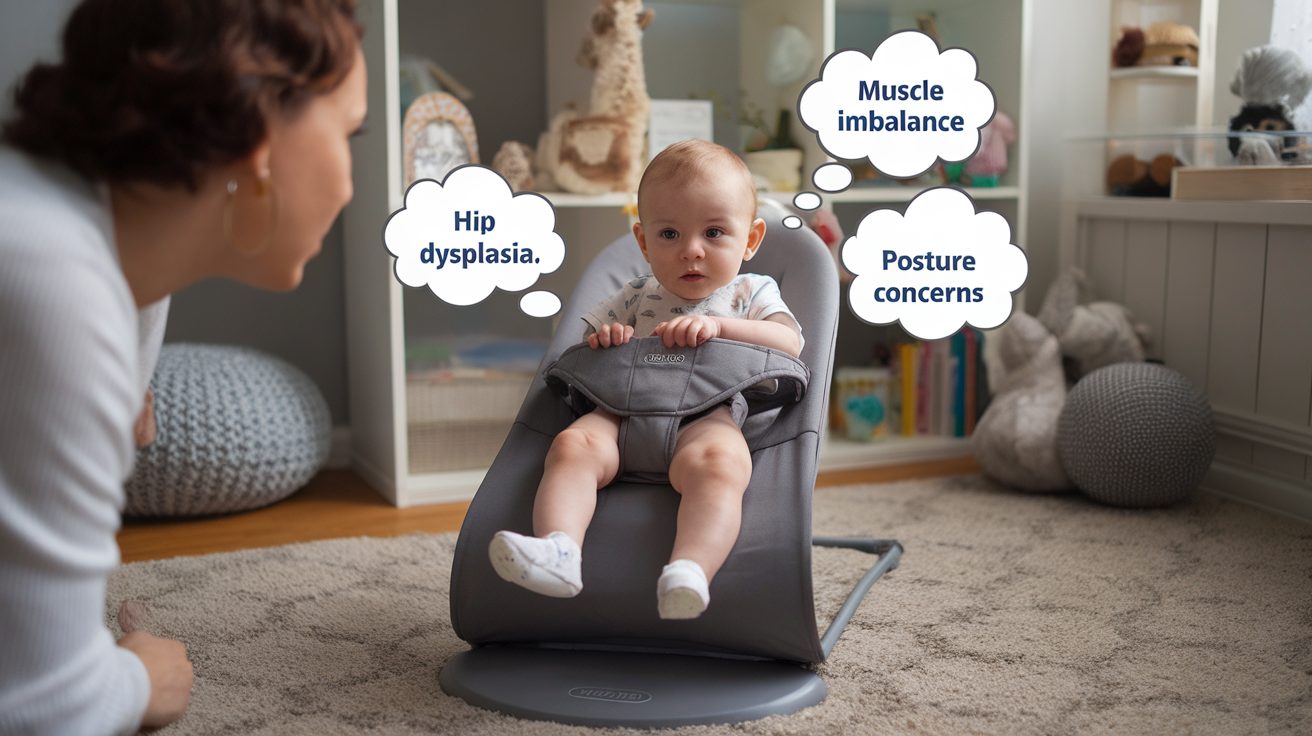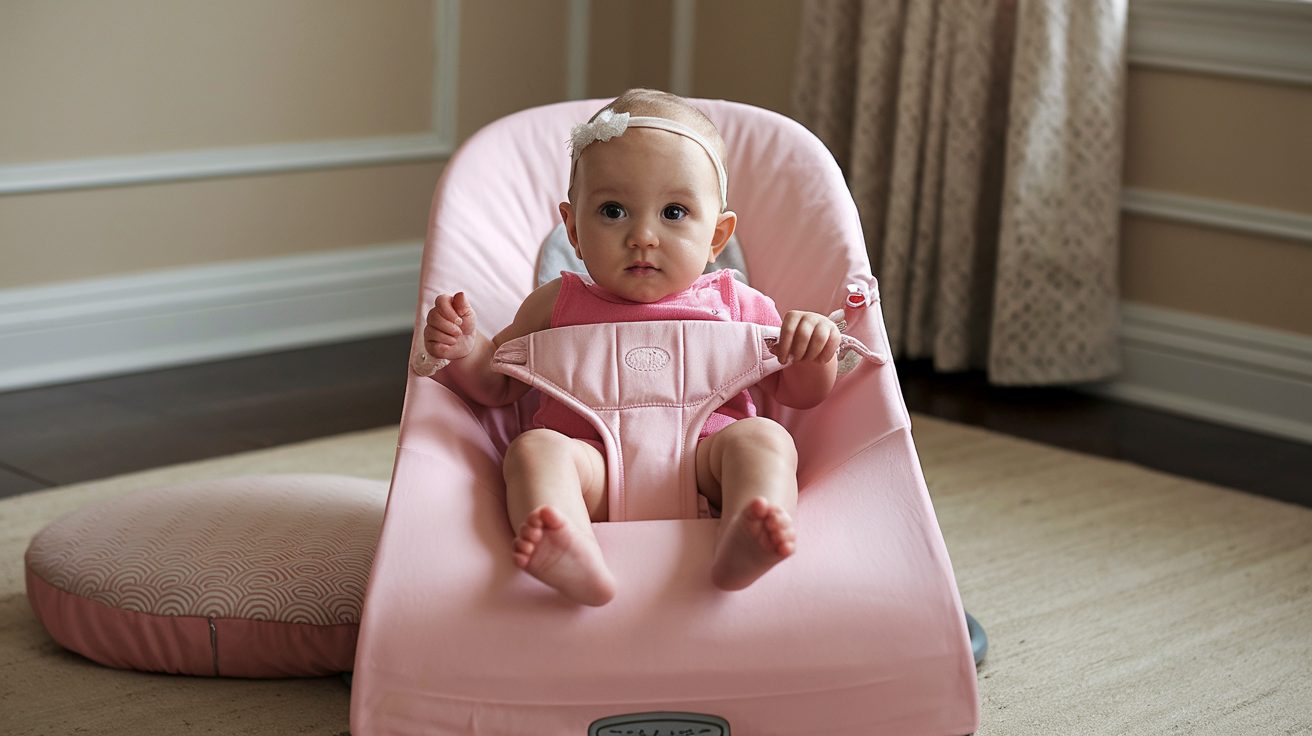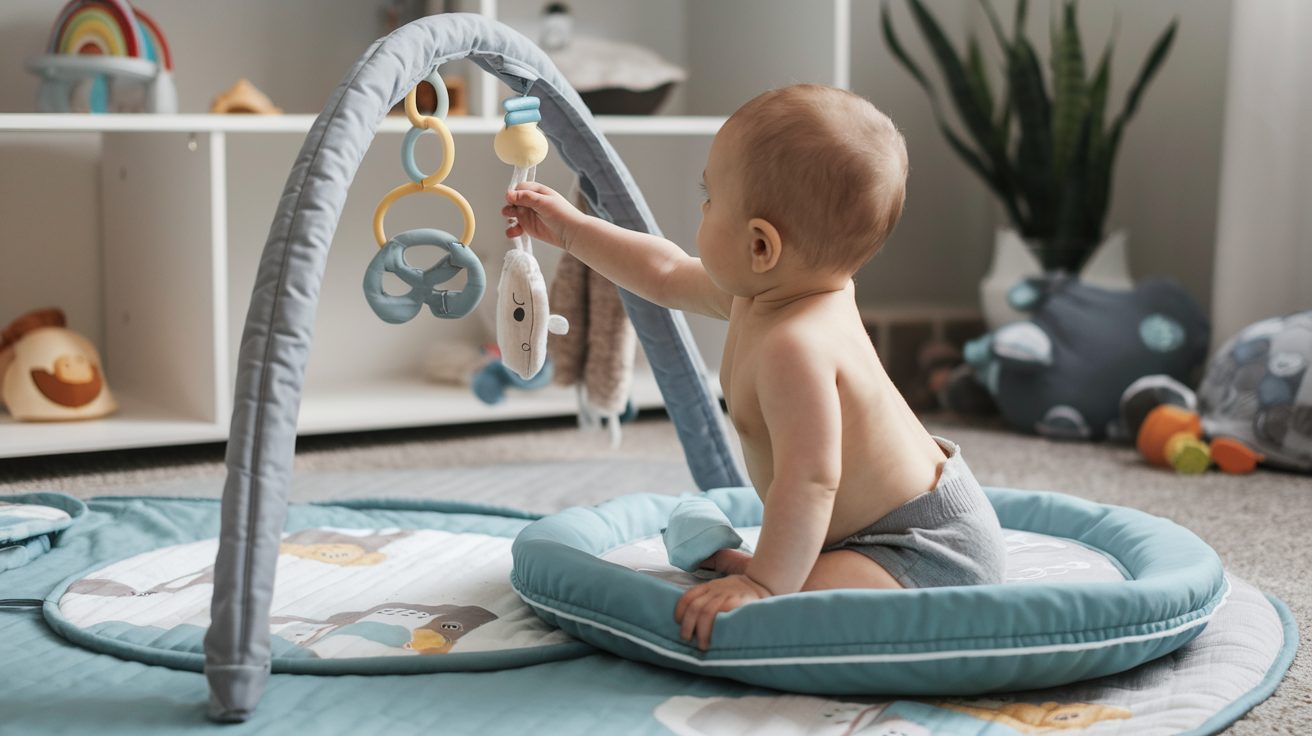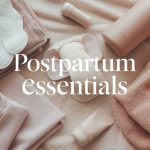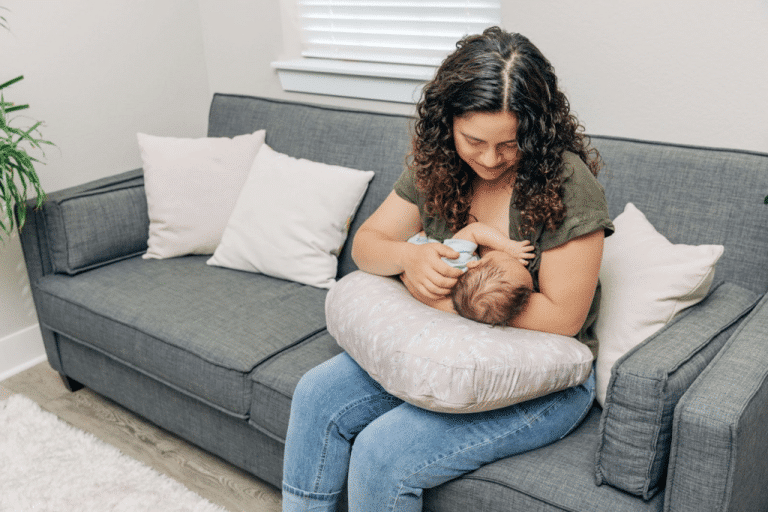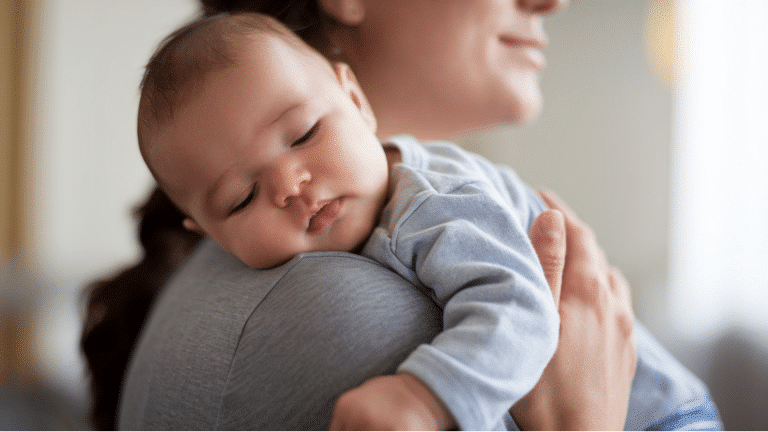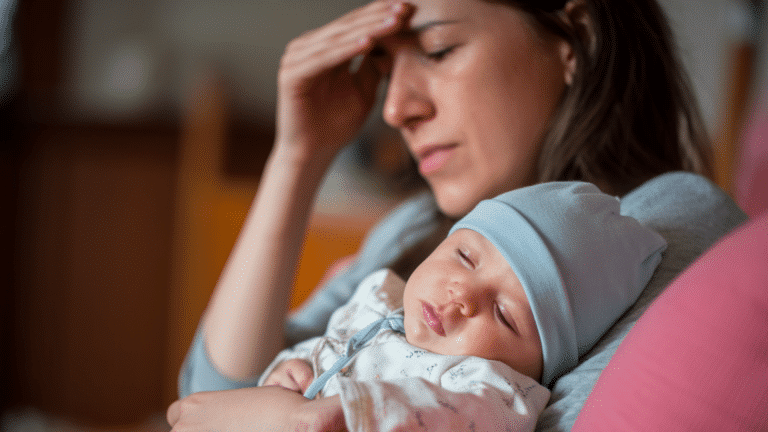I remember that moment, staring at the baby bouncer in my living room, wondering if my tiny 2-week-old would be safe in it.
Like you, I had so many questions running through my mind. Are bouncers really okay for a newborn? What if my baby’s neck isn’t strong enough?
As a first-time mom, I know how overwhelming it feels when you’re trying to make the right choices for your little one.
Every baby product comes with its own set of worries, and bouncers are no different.
Today, I want to help you understand everything about bouncer safety for newborns. Together, we’ll look at what makes bouncers safe or unsafe and when it’s okay to start using one.
Let’s find out if a bouncer could be a good choice for your precious little one!
What are Baby Bouncers?
Baby bouncers are baby gear designed to provide a safe and comfortable place for babies to relax, play, or sleep.
They typically consist of a soft, reclining seat attached to a frame with springs or elastic bands, allowing the baby to bounce or gently sway when they move.
Many bouncers come with additional features like toys, music, and vibration settings to help soothe and entertain babies.
While bouncers provide a secure space for babies and offer parents a break, it’s important to use them properly, ensuring that the baby is always supervised and not in the bouncer for extended periods.
What are the benefits of Baby Bouncers?
Baby bouncers can be a valuable tool in a parent’s daily routine, offering a range of benefits for both the baby and the caregiver. Here are some of the main advantages of using a baby bouncer:
1. Physical Development Benefits
- Strengthens leg muscles naturally through bouncing movements
- Develops core strength as babies learn to maintain balance
- Improves coordination between upper and lower body
- Helps develop proper posture through supported sitting
- Encourages natural muscle development in a controlled environment
- Supports development of gross motor skills
2. Cognitive and Sensory Advantages
- Enhances understanding of cause and effect (movement creates bouncing)
- Stimulates brain development through motion and balance
- Improves visual tracking as babies follow moving toys
- Develops spatial awareness and depth perception
- Provides appropriate vestibular stimulation
3. Emotional and Social Development
- Creates a safe space for independent play
- Builds confidence through self-initiated movement
- Helps develop self-soothing techniques
- Provides enjoyable entertainment that promotes positive associations
- Encourages interaction with attached toys and surroundings
The Potential Risks of Baby Bouncers
1. Developmental Delays
Extended use of baby bouncers can hinder natural movement and muscle development.
Babies need to practice skills like tummy time, crawling, and sitting to build strength and coordination. Bouncers limit their range of motion and restrict these developmental milestones.
Relying too much on the bouncer means missing out on essential activities that help babies gain muscle strength and coordination for walking and other movements.
Overuse can delay motor skill development, affecting their ability to sit up, crawl, or walk independently.
2. Hip and Posture Issues
Improper positioning in a bouncer can cause issues with hip development and posture.
Many jumpers force babies’ legs into an unnatural position, putting pressure on the hips and potentially leading to hip dysplasia, a condition where the hip joint doesn’t develop properly.
Babies’ bones are still growing, and forcing them into a restricted posture for long periods can hinder this natural development.
It’s crucial to use the bouncer in moderation, ensuring the baby is always positioned correctly to avoid these issues.
3. Muscle Imbalance
While bouncers encourage leg movement, they do not provide the full range of muscle activity needed for natural development.
Babies rely on reflexive movements in the bouncer rather than using their muscles actively to push, pull, or balance.
This can create muscle imbalances, as babies don’t get the opportunity to use their core, back, and arm muscles as much.
Limiting bouncer time in favor of these activities will help babies achieve a well-rounded and healthy physical development.
4. Risk of Injury
Baby bouncers present a safety risk if not used correctly. They should always be placed on a flat, stable surface, as positioning the bouncer on an elevated surface, like a table or countertop, increases the risk of tipping over.
Babies’ movements, even in secure bouncers, can cause instability and lead to falls.
Additionally, improper strapping or unsecured toys in the bouncer can pose choking or strangulation hazards.
Safety Tips for Using Baby Bouncers
- Ensure the bouncer is set up on a flat, stable surface.
- Never place the bouncer on an elevated surface, such as a countertop or table.
- Make sure the bouncer is locked into place, especially if it has a reclining feature or moving parts.
- Always use the safety harness or straps provided with the bouncer.
- Position your baby correctly in the seat to prevent slumping or sliding.
- Tighten the straps securely but comfortably.
- Never leave your baby unattended in the bouncer.
- Monitor your baby, especially when the bouncer is in motion, to prevent tipping.
- Follow the manufacturer’s age and weight limits.
- Most bouncers are suitable for newborns up to around 6 months old, depending on your baby’s ability to sit up or roll over.
- Always check the weight capacity before use.
- Limit bouncing sessions to 20-30 minutes to prevent over-stimulation or discomfort.
Common Myths and Misconceptions About Baby Bouncers
Baby bouncers sit at the center of many such myths, creating confusion and anxiety for new parents seeking the best for their little ones.
Understanding the truth behind these misconceptions can empower parents to use baby bouncers more effectively and confidently, balancing convenience with developmental awareness.
1. Muscle Development Misconceptions
Many parents believe baby bouncers help strengthen their infant’s muscles, but scientific evidence tells a different story. Pediatric physical therapists emphasize that bouncer movements are primarily reflexive, not active muscle-building exercises.
- Myth: Bouncers build leg strength
- Reality: Babies experience passive, not active muscle engagement
- Expert Insight: Bouncers do not contribute to meaningful muscle development
2. Developmental Progress Myths
- Myth: Bouncers help babies learn to stand and walk faster
- Reality: Can potentially delay natural movement development
- Expert Perspective: Floor time is crucial for developmental milestones
3. Safety and Usage Misconceptions
- Myth: Bouncers are completely safe for prolonged use
- Reality: Limited, supervised use is crucial
- Expert Recommendation: Short, intermittent bouncer sessions
Alternatives to Baby Bouncers
While baby bouncers are popular for providing convenience and entertainment, they’re not the only option for your baby’s development.
As parents, it’s important to explore alternatives that promote physical, cognitive, and emotional growth in a more dynamic way.
- Use floor seats with activity trays
- Create comfortable floor nests with pillows
- Practice assisted sitting with parental support
- Use sitting supports designed for developing babies
- Incorporate interactive toys at eye level
- Gentle assisted standing while supporting baby
- Rolling games with soft toys
- Rocking and swaying while holding baby
- Leg bicycle exercises during diaper changes
Conclusion
As a mom of two, I’ve learned that keeping our little ones safe is always the top priority.
After looking into baby bouncers, here’s what it comes down to: bouncers can be safe for newborns when we use them the right way.
Remember the basics: always buckle up your baby, keep an eye on them, and stick to short bouncing sessions.
Your bouncer should be on a flat surface, away from stairs or places where older kids might bump into it. Those age and weight limits? They’re there for a reason!
Trust your gut feeling. If something doesn’t feel right about how your baby sits in the bouncer, it’s okay to wait or try something else. Every baby is different, and you know yours best.
Bottom line? A bouncer can be handy, but it shouldn’t be your baby’s main hangout spot. Keep it simple, keep it safe.
Frequently Asked Questions
Do Pediatricians Recommend Baby Bouncers?
Pediatricians recommend baby bouncers with caution, advising limited use and proper supervision to avoid developmental risks.
What Is Better, A Baby Walker Or Bouncer?
Neither a walker nor a bouncer is ideal. Both can potentially hinder natural motor skill development. Floor time is best.
Do Baby Bouncers Delay Walking?
Yes, prolonged bouncer use may delay walking by restricting natural movement and muscle development essential for walking.

